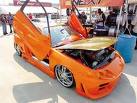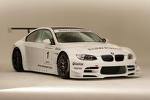New-Generation Number Plates and Smart Licences
In the next two months, there will be new-generation vehicle number...
 For many of us, cars describe who we were, who we are and who we want to be. And so tied in to our culture is the automobile, we often define entire generations solely by the vehicles of the era. And so tied in to our culture is the automobile, we often define entire generations solely by the vehicles of the era. Cars like the ’57 Chevrolet Bel Air represent the birth of rock ‘n’ roll, while VW’s Bus is a long-standing icon of the counterculture movement. Not all icons are great; cars like the Gremlin and Pinto have come to represent the 1970s, even though that decade also gave us the Nissan Z and Lamborghini Countach.
For many of us, cars describe who we were, who we are and who we want to be. And so tied in to our culture is the automobile, we often define entire generations solely by the vehicles of the era. And so tied in to our culture is the automobile, we often define entire generations solely by the vehicles of the era. Cars like the ’57 Chevrolet Bel Air represent the birth of rock ‘n’ roll, while VW’s Bus is a long-standing icon of the counterculture movement. Not all icons are great; cars like the Gremlin and Pinto have come to represent the 1970s, even though that decade also gave us the Nissan Z and Lamborghini Countach.
This got us to thinking: What are the cars that represent our generation? What are the vehicles that our children and grandchildren will associate with our daily lives? Not wanting to take the easy way out and make a list of cars that have been icons for decades (Mustang, 911, and so on), we wanted to choose the cars of the modern era (post-1980) that best answer this question. And after much debate and consideration, we collectively decided that these are the 10 cars that best represent this generation.
No.1 Toyota Prius (Second Generation)

It seems that just as the Hummer H2 fell out of favor, its polar opposite, the Toyota Prius, became the next big thing. Toyota’s original hybrid sedan was a bit of a dumpy machine, but it proved that the hybrid technology worked. When Toyota redesigned the car to the slippery, futuristic ride we all associate with hybrids today, the Prius’ popularity took off, and it became the must-have ride of Hollywood, the commune and suburbia. After the SUV’s glorification of excessive consumption, frugality, green cred, and intelligent gadgetry became fashionable, and the Prius had those in spades. For better or worse, the second-generation Prius has defined what a hybrid — and the future of transportation — is supposed to look like, and anyone who wants to sell a “green” car had better make sure it looks like the Toyota.
No.2 Acura Integra

Honda’s Civic may have been the face of the fledgling importtuner movement, but Acura’s Integra GS-R was the heart. Literally. At the height of Honda’s popularity in the tuner market, the Integra’s DOHC VTEC motor was swapped into just about anything wearing an “H” badge in the hopes of matching the stock GS-R’s solid performance. The four-eyed, third-generation Integra GS-R was the import everyone in the scene coveted; it looked like nothing else on the road, was reasonably quick for its time, handled well, and was reliable, to boot. The holy grail of Honda fans was the Acura Integra Type R — an ultrarare Integra variant designed only to go around a racetrack as quickly as possible. To many, the Integra Type R was the pinnacle of Honda engineering, and to this day, it’s considered one of the finest front-drive vehicles ever built.
No.3 Volkswagen New Beetle

A “chick car” if there ever was one, Volkswagen’s New Beetle nonetheless ushered in a new era of car design. For decades, auto manufacturers worked tirelessly to make their cars look like “the future,” but the New Beetle unabashedly tried to look like the past. Aping the look of the original Bug while adding a hint of modern flare, the New Beetle’s mix of old and new enthralled the public and lured thousands of new consumers to the VW brand. That the design still looks fresh 10 years after its introduction is a testament to the skill of New Beetle lead designer J Mays. (Mays would later leave VW for Ford, further honing his “retro-futurism”design language as the lead designer of the 2005 Mustang.) The success of the New Beetle encouraged other manufacturers to hop on the retro-futuristic bandwagon. BMW’s MINI and Fiat’s 500 prove that making the old new again can still bring accolades, and the second-generation New Beetle is already one of 2011’s most anticipated cars.
No.4 Pontiac Aztek

Sometime in the 1980s, Pontiac went from being GM’s official branch of driving excitement to the branch that added a lot of plastic body cladding to uninspiring sedans and minivans. The ultimate example of this plasticization of Pontiac is the Aztek, the minivan-crossover best known as the ugliest thing on wheels. Surprisingly though, the Aztek actually has a rabid and dedicated fanbase — folks who love the utility, mostly — though none of them will defend the car’s looks. Pontiac’s popularity continued to wane in the post-Bandit days, and it could be argued that the unpopular Aztek was the vehicle that signaled the beginning of the end of the company. So tied in to Pontiac’s public perception was the Aztek that by the time the brand got its mojo back with cars like the GTO, G8 and Solstice, it was too late. Buyers either forgot about or ignored the brand, and Pontiac shuttered its doors for good in 2010.
No.5 Cadillac Escalade

A street cruiser in an SUV body, Cadillac’s Escalade breathed new life into America’s premier luxury brand. While the nameplate first launched with a badge-engineered Chevrolet Tahoe, it was the Art & Science-themed second-generation truck that became a phenomenon. Released at the peak of the SUV boom, buyers were enamored of the Escalade’s knife-edged bodywork, bright chrome accents and flashy wheels; the luxury features inside the truck were just an added bonus. The Escalade projected the image of strength SUV buyers demanded, but with its Cadillac tuning, it remained civilized enough for city use. This combination of flash, size and comfort made it a favorite among athletes, rappers and celebrities, many of whom would often name-check the vehicle across all forms of media, and the truck became a pop-culture icon.
No.6 Dodge Grand Caravan

Though not a car that most here would long to drive, Chrysler’sminivan certainly shaped the childhood of everyone reading this. Famed auto executive Lee Iacocca is credited with coming up with the idea for the minivan during his time as an executive at Ford Motor Company in the 1970s, with Ford passing on the idea. Iacocca eventually moved to then-beleaguered Chrysler, where he was able to see his idea come to fruition. Introduced in 1983, the Dodge Grand Caravan birthed the minivan segment and became an instant sales hit, not only proving Iacocca’s idea to be a successful one, but saving Chrysler in the process. Customers loved the fact that the Caravan drove just like a car (it was based on a modified version of the K-car platform), and its large doors, cavernous interior and low platform height made loading children and cargo into the Caravan a breeze. Chrysler perfected the family hauler when it created the Caravan, and to this day, manufacturers still struggle to beat Chrysler at the minivan game.
No.7 Ferrari Enzo
For those of us who grew up in the ‘80s, it’s tough to top Italian machinery like the Lamborghini Countach or Ferrari Testarossa, but history will show that the greatest Italian car of our time is Ferrari’s Enzo. Named for founder Enzo Ferrari, the Enzo is the pinnacle of Ferrari engineering, featuring the finest F1-derived technologies Ferrari could fit in a road car. The mere fact that it was a Ferrari commanded attention, but the Enzo was the successor to halo cars like the F40 and F50, and only those hand-selected by Ferrari were allowed to purchase the car. The stories surrounding the development of the Enzo made it a legend before it even hit the streets, and that the car is still regarded as one of the finest Ferraris ever built solidifies its place as a generation-defining automobile.
No.8 Hummer H2
With its war-hero origins, unstoppable capabilities and an iconic, distinctive look, Hummer was poised to become GM’s answer to Jeep. The most popular Hummer, the H2, was introduced at the height of the SUV craze — a time that saw the large, off-road machines turned into fashion accessories. Ready to capitalize on this trend, someone at GM figured that the best way to launch the H2 was to paint it yellow, give it a ridiculously high sticker price and use Regis Philbin to pitch the vehicle to women who wanted to intimidate men.
This marketing concept worked, and dealers were able to sell the vehicle at a premium. But when the inevitable SUV backlashensued, the flashy Hummer H2 took the brunt of it. The H2 became the symbol of greed, overconsumption and baby seal-killing environmental destruction, and the H2 owners interested more in the fashion aspect of the car ditched it for the next trend. Hummer died when GM pulled the plug and sold all the assets to a Chinese firm in 2009.
No.9 Scion XB

Visually not much more than a small box on wheels, few would have predicted that Scion’s original xB would become a 21st century style icon. Cheap, economical and designed by tracing an Ikea catalog, the xB’s boxy shape maximizes interior volume despite the small exterior footprint — a necessity in the xB’s space-constrained home market of Japan. Clever marketing positioned the xB as a vehicle for the modern counterculture, a tactic that proved successful, as Scion has the youngest demographic in theNorth American car market. This “cool factor,” along with its cheap purchase price, long list of standard features and implied Toyota reliability made the xB incredibly popular across a wide demographic range. Other boxy cars have tried to capture the original xB’s cachet, but none have managed to steal the Scion’s boxy crown.
No.10 BMW M3

BMW’s 3 Series has been the benchmark luxury performance sedan since its introduction in the mid-1970s. In 1986, BMW released a high-performance variant of its 3 Series, the M3. Based on the E30 chassis coupe, the first-generation M3 was BMW’s take on a street-legal race car, and its performance capabilities made it an instant legend. But this first car’s track-based tuning made it a bit rough for the common folk, so when BMW followed up with an E36-based M3, the company kept the performance levels ferociously high but added a few additional luxuries and softened the car up a bit. This formula worked, making the E36 M3 a sales and critical success for BMW. BMW continues to further refine and enhance the M3 formula with each successive 3 Series, with thecurrent M3 considered one of the finest sports cars ever made.
Article source: http://www.askmen.com/top_10/cars/top-10-cars-that-represent-this-generation_1.html
Gregory
March 20, 2013 at 8:53 am
I like Toyota cars and Prius (Second Generation) is no exception,this a complete car which has really redefined the make of modern cars.